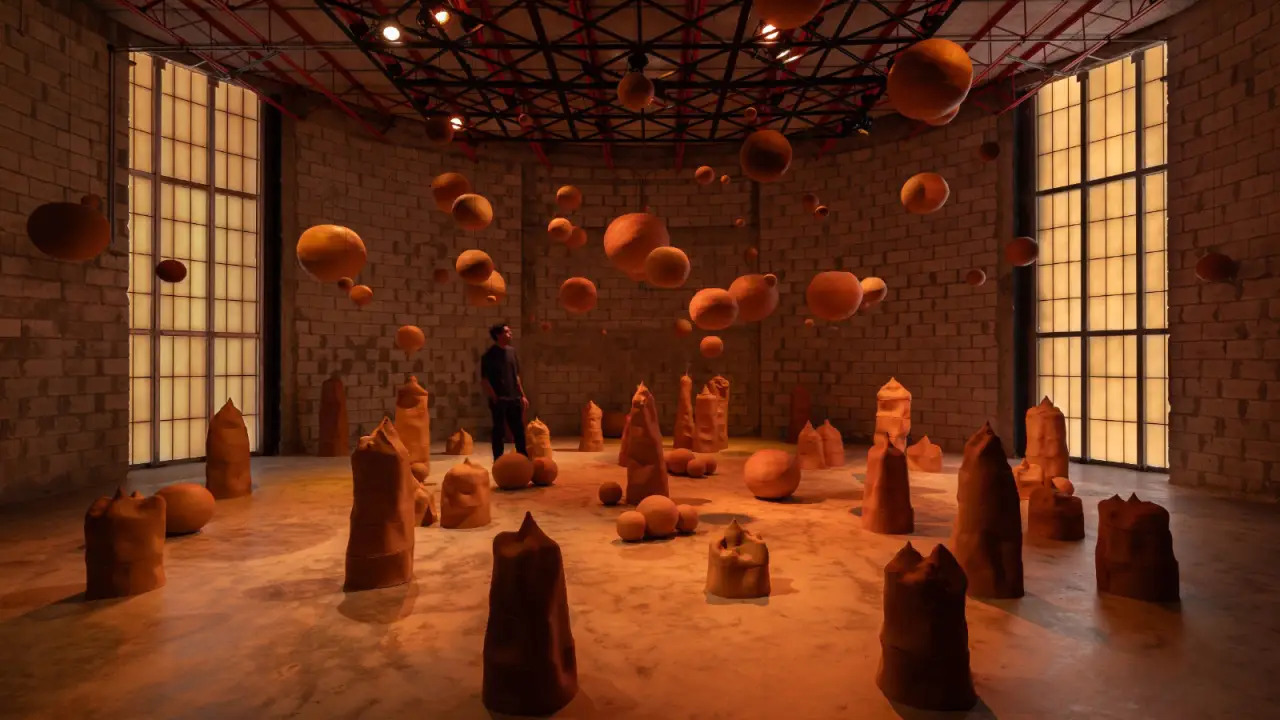This month’s column raises questions and brings highly relevant reflections on art as a tool for social engagement in building a more sustainable and collaborative future. What practices can be effective in creating a more diverse and inclusive society? In what ways can art act by provoking participatory actions of education and social transformation?
On this subject, I spoke with artists and curators who challenge us to think collectively. In what ways can you, reader, actively contribute within your own environment?
According to Indigenous visual artist Sallisa Rosa, the whole of society must be engaged in practices of social transformation, not just artists: “But I also believe that now, in the present, it is time to revise those patterns that sustain outdated structures and redesign the world through art. Many artists are working with their practices as healing and with forms of collective creation. In a broad sense, these arts impact many people” she affirms. “There is a resonance that begins in imagination and impacts reality”.
Curator Ulisses Carrilho sees these collective practices of action and revision, which stimulate engagement, not as a fleeting or temporary trend: “I prefer to understand and trust that this is a re-evaluation of how cultural professionals and institutional managers can collectively experiment with other speculative and propositional objectives for the artistic field.”
And he raises a provocative question: “Would it be possible, in an increasingly accelerated and fleeting world, for someone to produce any kind of art that was not, in some way, a form of social engagement?”
For visual artist Gustavo Von Ha, a good work of art already gathers within itself social, political, critical, formal, and conceptual questions, without needing to be literal. “The most effective contribution that art can generate is political awakening, since everything that enters the collective sphere is pure politics. In recent years, with the advance of social media, there has been an update in this sense, as networks have more directly propelled all artistic production. This is good because it demands reflection from the very art system.”
Curator Camilla Rocha Campos argues that art is not only social engagement but also historical and ethical: “Art is to learn, unlearn, and relearn from the realm of sensibility, as one navigates the world. From this premise, an abstract painting can generate as much social engagement as a public seminar on activist art within a museum. In both examples, it is possible to present intensities and gestures that guide ways of looking at reality, in order to build thought and action aligned with life,” she reflects. “It is important to consider the inseparability of art from its social, cultural, and political knowledge field. Understanding this eliminates the irresponsibility of practices that claim not to be political but seek to manage collective desires or manipulate symbolic values.”
In line with Camilla, Maranhão-born artist Thiago Martins de Mello believes that true inclusion through art cannot lean on the market and dominant classes: “For this to occur, a critical and liberating education is necessary; otherwise, we will have puppets disseminating selective values of the dominant classes, flaunting the oppressor’s symbols as the ultimate goal. That is, the right to flaunt and oppress as a synonym of victory. When a famous brand gives an artist a makeover, makes them paint values that are not their own, and uses their image as a symbol of controlled ‘diversity,’ this is not inclusion but the continuation of the old order.”
Carrilho believes that in recent decades contemporary art has encountered many of the most urgent issues of social movements: “Alongside the collectives experimented with in studios throughout art history, the groups of modern art, the public art collectives, and the educational turn, I perceive with enthusiasm that artists have been experimenting with other voices, other authorships. In some measure, apart from market norms, less individual authorships have been attempted in direct relation with activism and alternative forms of political organization. Institutions carry educational departments that, in a powerful way, have gained strength in demanding fairer labor relations and more distributed power dynamics — an everyday and forceful example of social engagement,” analyzes the curator.
In this sense, I believe we have here an absolutely decisive point of social and collective impact: the educational role of cultural institutions. Programs that invest in the social perspective of art, aiming not only to summon audiences but to build knowledge in direct partnership with diverse communities, weaving connections with the everyday lives of the people involved, are, in my opinion, the most effective path toward social transformation through art.
